100th Anniversary Great Nave Tour at the Cathedral of St. John the Divine
Celebrate the 1925 construction of the stunning nave inside the world's largest Gothic cathedral!


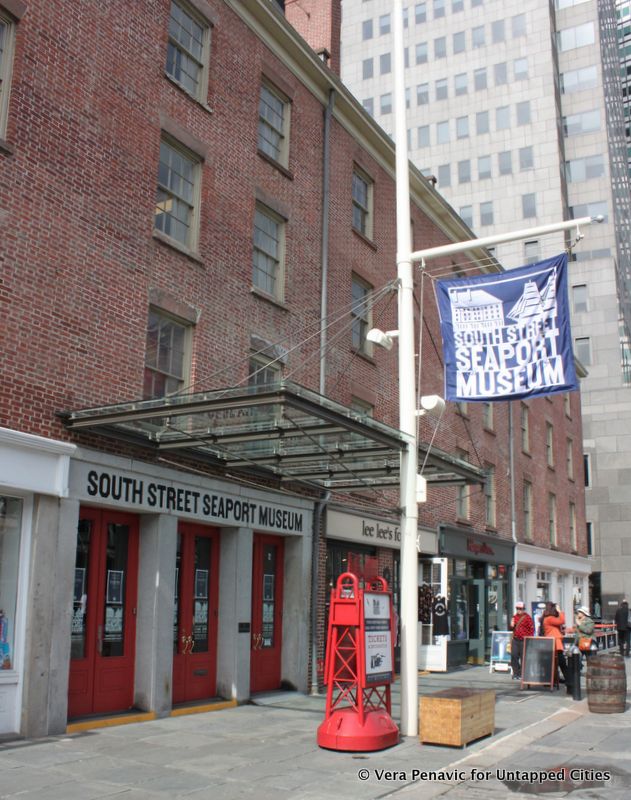
In October 2012, Hurricane Sandy made its way up the East Coast of the United States wrecking everything it passed over. When it finally made its way up to New York City, the damage from flooding was too great. Among the many buildings and subway lines that were flooded, the South Street Seaport Museum was one of them. With an unparalleled restoration currently underway, beginning today, March 17, 2016, the museum’s flagship announces the opening of its first Post-Hurricane Sandy Exhibition Street of Ships: The Port and Its People.
The exhibit featured works of art and artifacts from the museum’s permanent collections relating to the 19th century history of the Port of New York. The South Street Seaport, known as the “Street of Ships” played important role in making New York City one of the world’s most busiest ports and one of the largest cities in the America by the 20th Century. But even by 1860, the South Street Seaport was already a center of world trade, linking New York to Europe, the Far East, the Caribbean, and South America.
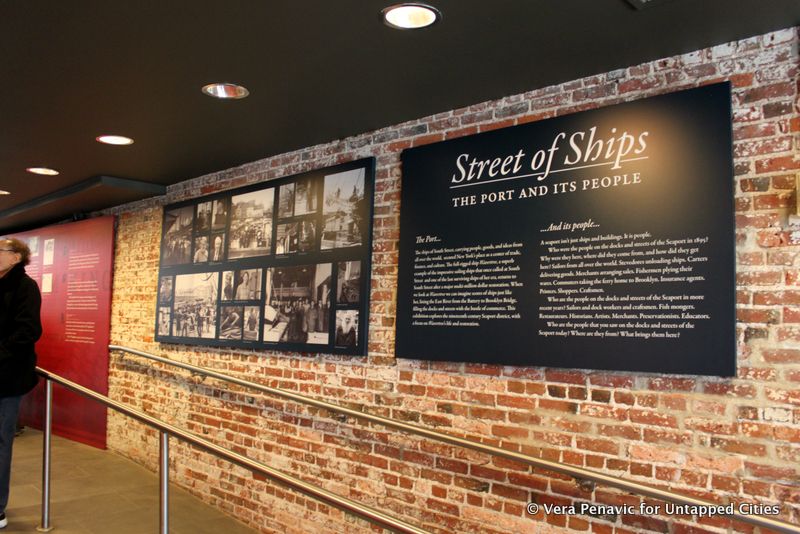
Exotic goods from all over could be found at this port, and by 1865, it rivaled even London. The exhibit explores four key innovations and entrepreneurs who contributed greatly to the rise of the neighborhood. Peter Schermerhorn built New York’s first world trade center. The Black Ball Line was the first ocean liner, and the first to make trans-Atlantic Oceanic trips with set departures and schedules. Abiel Abbot Low, best known for his trading ventures in the Far East, was able to master the competitive trade with the China in the 1840s. Finally, the Collin’s Line set the standard for fast, luxurious trans atlantic steamship travel in the mid-1800s, though large-scale accidents marred its achievements.
Another important part of the museum’s exhibit is tied in with the neighboring addition of Bowne & Co., Stationers, a print shop that still uses old-fashioned printing presses to create books and stationary today, dates back to 1775. The exhibit in Streets of the Ships features printing presses and offers a detailed explanation on the linked history between trade and printing.
Where there is trade, there’s finance, and where there’s finance, there must be printing. Billheads, receipts, bills of lading and invoices are all very important additions to world trade, and in 1865, there were over 8,000 printers contributing to the growth of commerce.
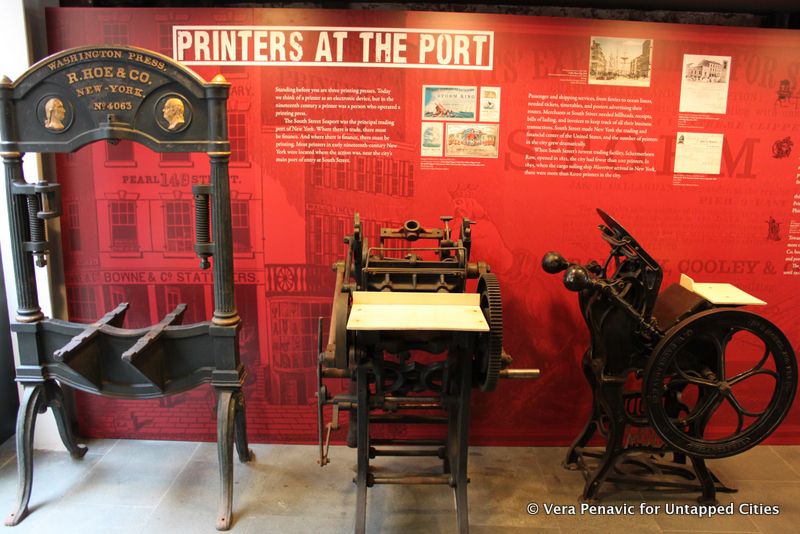
The whole exhibit centers around the 1885, full-rigged sailing cargo ship Wavertree. The ship, an archetype of the kinds of ships that made its way to the South Street Seaport, is currently in the process of a 15-month, $13 million city-funded restoration. The restoration process is outlined in the exhibit, along with its history and artifacts. The ship is set to return to the seaport in July 2016 after completing the largest restoration of its type in more than a generation.
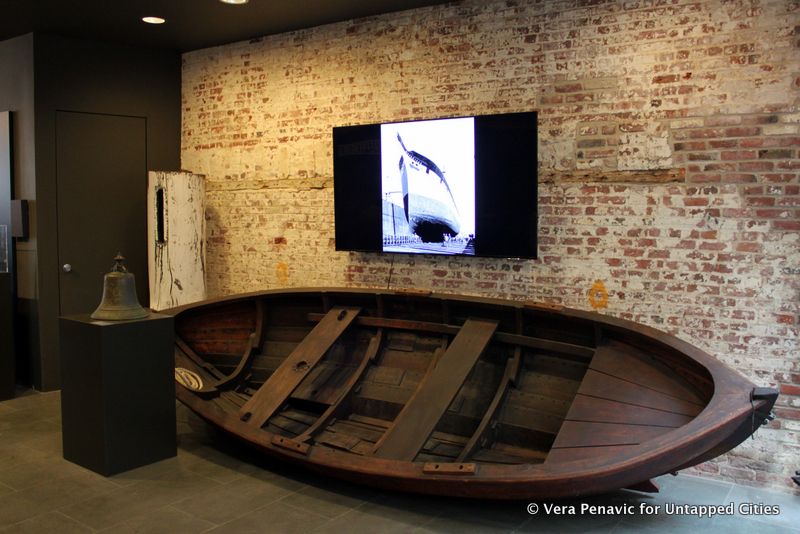
Wavertree is the flagship of the museum’s fleet, and is the first and last remaining example of bulk cargo ships that connected New York to all the major ports of the world. Captain Jonathan Boulware, Executive Director of the Museum, enthusiastically explained that “when she returns this summer, Wavertree will truly be a ship worthy of the New York. This exhibition draws from the history of the Seaport, the birth of New York, and the people who have made both the district and the Museum thrive. We’re absolutely thrilled to finally be bringing artifacts from the collection forward to the public for the first time since Sandy.”
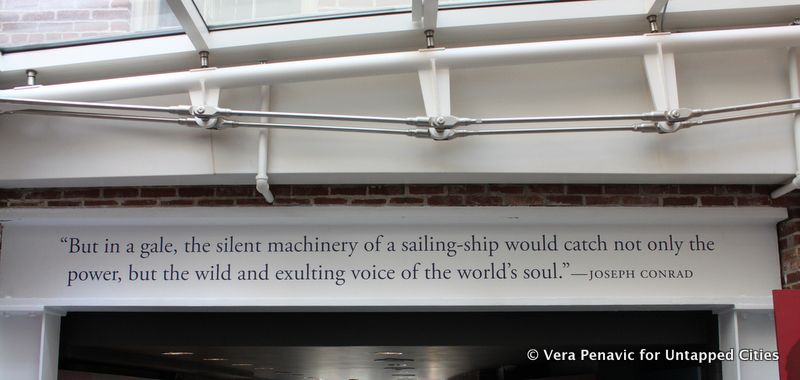
Quote from The Mirror of the Sea by Joseph Conrad featured on the ceiling of the exhibit.
Next, check out 10 Ships That Have Called NYC’s South Street Seaport Home and 5 “Wicked” Secrets of NYC’s 19th Century South Street Seaport.
Subscribe to our newsletter